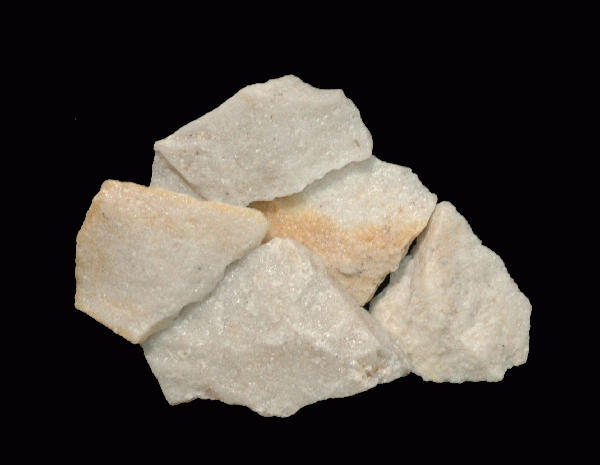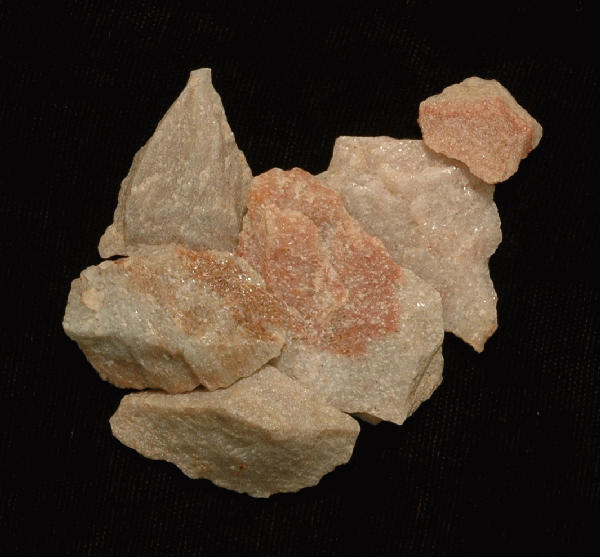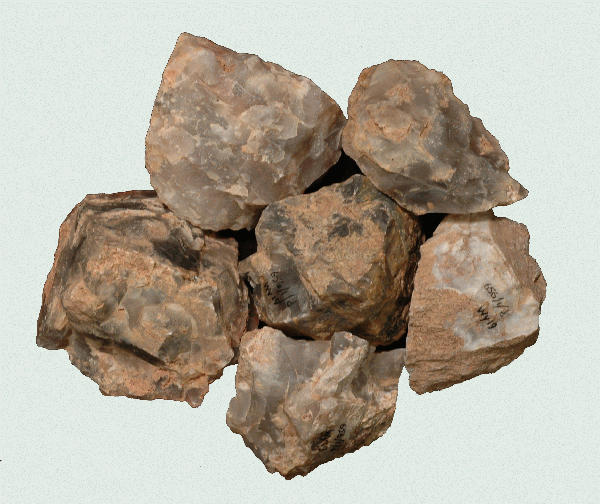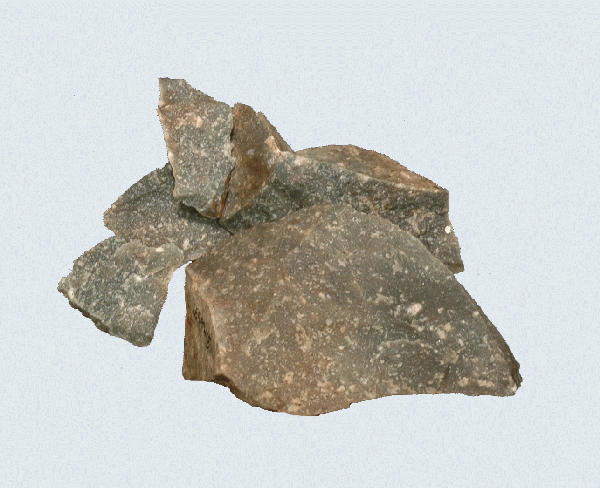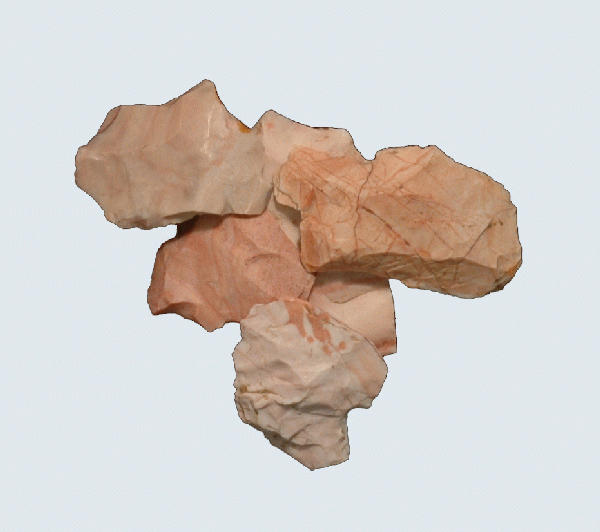Erwin Formation, quartzite, Mill Mountain, 44RN0114, Roanoke County, Virginia.
Quartzite Erwin Formation 44RM429
Type Quartzite
Collection Location:
Roanoke (Mill Mountain), Rockingham (44RM0429), and Rockbridge (44RB0283) counties, Virginia.
Description
Erwin quartzite is a Cambrian aged metamorphosed normally white, clean, well-sorted quartz (beach) sand cemented with silica. The color of this material varies and includes: white, tan, brown, pink, red, and grays with shades from light to dark within each color. Grain size within the samples varies from fine to medium sized, with the finer material flaking the best. Formed by the dense compaction of sandstone, this rock is usually associated with low-grade metamorphism and is quite brittle. In Rockingham and Augusta counties, the Erwin is identified by the presence of an index fossil, Scolithus, which is distinguished by thin, vertical tubes.
Distribution
Massive beds of Erwin Quartzite are found on the western slopes of the Maryland and Virginia Blue Ridge. The sides of the ridges evidence extensive fields of annular quartzite blocks that have fallen from higher ridges. Cobbles, carried by feeder streams to the rivers of the Great Valley, are abundant. The Erwin does not outcrop on the eastern slopes of the Blue Ridge, and quartzite found at sites in the Inner Piedmont was most likely introduced as bifacial blanks or large flakes.
Cultural Implications
The Erwin quartzite was used by the native peoples of the Blue Ridge and Shenandoah Valley throughout prehistory. It is the primary raw material found at sites in the north and central Virginia Blue Ridge, with greatest use occurring during the Middle to Late Archaic (Morrow Mountain, Guilford, and Savannah River), Early Woodland continuum. Large, Late Archaic Period campsites extend across the terraces of the South Fork of the Shenandoah River, where Erwin Cobbles were ‘mined’ and reduced on site to manufacture broadspears.
References
Prepared By Moldenhauer 1999; Nash 1999; Tolley 1999; Egloff 2008
